height 23 1/4in (59.1cm) Provenance Field collected by Dr. Paul Aubert, Directeur Institut Pasteur in Brazzaville, 1909-1916; Co-author of Quelques coutumes particulières du mariage au Cameroun, Togo-Cameroon, 1929 Ader Picard Tajan, May 21, 1990, Lot 88 Private American Collection Exhibited The Inner Eye: Vision and Transcendence in African Arts, Los Angeles County Museum of Art, February 26 - July 9, 2017 William Rubin notes, 'Taken together, the Kota and Hongwe reliquary figures--certainly the most abstract of the tribal sculptures Picasso encountered--constitute, along with Baga figures and Fang masks and reliquary heads, the most important African prototypes for his art from June 1907 until the summer of the following year. The painter owned two Kota reliquary figures and though there is no documentation, photographic or otherwise, as to when he acquired them, the simplicity, rawness, indeed the very mediocrity of both of them--quite apart from their influence on his work in 1907--suggest that they were among the earliest tribal objects he acquired. By the start of World War I, Paul Guillaume possessed some very fine Kotas, but Picasso seems not to have reached for these (in part, no doubt, because they were very expensive.) The lozenge-shaped lower supports for the heads [as in the work presented here] of the Kota reliquary guardians are usually taken--wrongly, the specialists tell us--as legs. And the readings by the modern artists were no exception. If we imagine them as legs, the reliquary figure as a whole suggests a dancer--as we see in the little leaping personage in Klee's Idols--whose heels are together and whose knees are splayed out in profile below the frontal head. Picasso was evidently sufficiently fascinated by this bent knee position to explore it in a large drawing, which was extrapolated in paintings such as Nude with Raised Arms known generically as "Dancing figures" or "African Dancers."' (Primitivism in 20th Century Art, The Museum of Modern Art, New York, 1984-5, vol. 1, pp. 266-7) The concave oval face of the present example is subdivided into four quadrants by two brass bands. Two raised concave eyebrows accentuate the convex circular eyes, each inset with nails as pupils and flank the projecting triangular nose. The outer surface of the face is covered with successive bands of cut copper filaments. The two curved lateral extensions, often interpreted as cheeks, are covered with undecorated brass on the front, while the crescent form extension on the top, often interpreted as the moon, features a raised section in the center decorated with an embossed triangle design. The cylindrical neck is wrapped in brass with an embossed diamond pattern. The upper section, often interpreted as shoulders, of the openwork lozenge is covered at the front with applied brass with an alternating linear design of triangles; the lower section bound with fiber cordage. On the reverse side, directly behind the face, is an unusual figure of a splayed monkey carved in low relief.
height 23 1/4in (59.1cm) Provenance Field collected by Dr. Paul Aubert, Directeur Institut Pasteur in Brazzaville, 1909-1916; Co-author of Quelques coutumes particulières du mariage au Cameroun, Togo-Cameroon, 1929 Ader Picard Tajan, May 21, 1990, Lot 88 Private American Collection Exhibited The Inner Eye: Vision and Transcendence in African Arts, Los Angeles County Museum of Art, February 26 - July 9, 2017 William Rubin notes, 'Taken together, the Kota and Hongwe reliquary figures--certainly the most abstract of the tribal sculptures Picasso encountered--constitute, along with Baga figures and Fang masks and reliquary heads, the most important African prototypes for his art from June 1907 until the summer of the following year. The painter owned two Kota reliquary figures and though there is no documentation, photographic or otherwise, as to when he acquired them, the simplicity, rawness, indeed the very mediocrity of both of them--quite apart from their influence on his work in 1907--suggest that they were among the earliest tribal objects he acquired. By the start of World War I, Paul Guillaume possessed some very fine Kotas, but Picasso seems not to have reached for these (in part, no doubt, because they were very expensive.) The lozenge-shaped lower supports for the heads [as in the work presented here] of the Kota reliquary guardians are usually taken--wrongly, the specialists tell us--as legs. And the readings by the modern artists were no exception. If we imagine them as legs, the reliquary figure as a whole suggests a dancer--as we see in the little leaping personage in Klee's Idols--whose heels are together and whose knees are splayed out in profile below the frontal head. Picasso was evidently sufficiently fascinated by this bent knee position to explore it in a large drawing, which was extrapolated in paintings such as Nude with Raised Arms known generically as "Dancing figures" or "African Dancers."' (Primitivism in 20th Century Art, The Museum of Modern Art, New York, 1984-5, vol. 1, pp. 266-7) The concave oval face of the present example is subdivided into four quadrants by two brass bands. Two raised concave eyebrows accentuate the convex circular eyes, each inset with nails as pupils and flank the projecting triangular nose. The outer surface of the face is covered with successive bands of cut copper filaments. The two curved lateral extensions, often interpreted as cheeks, are covered with undecorated brass on the front, while the crescent form extension on the top, often interpreted as the moon, features a raised section in the center decorated with an embossed triangle design. The cylindrical neck is wrapped in brass with an embossed diamond pattern. The upper section, often interpreted as shoulders, of the openwork lozenge is covered at the front with applied brass with an alternating linear design of triangles; the lower section bound with fiber cordage. On the reverse side, directly behind the face, is an unusual figure of a splayed monkey carved in low relief.
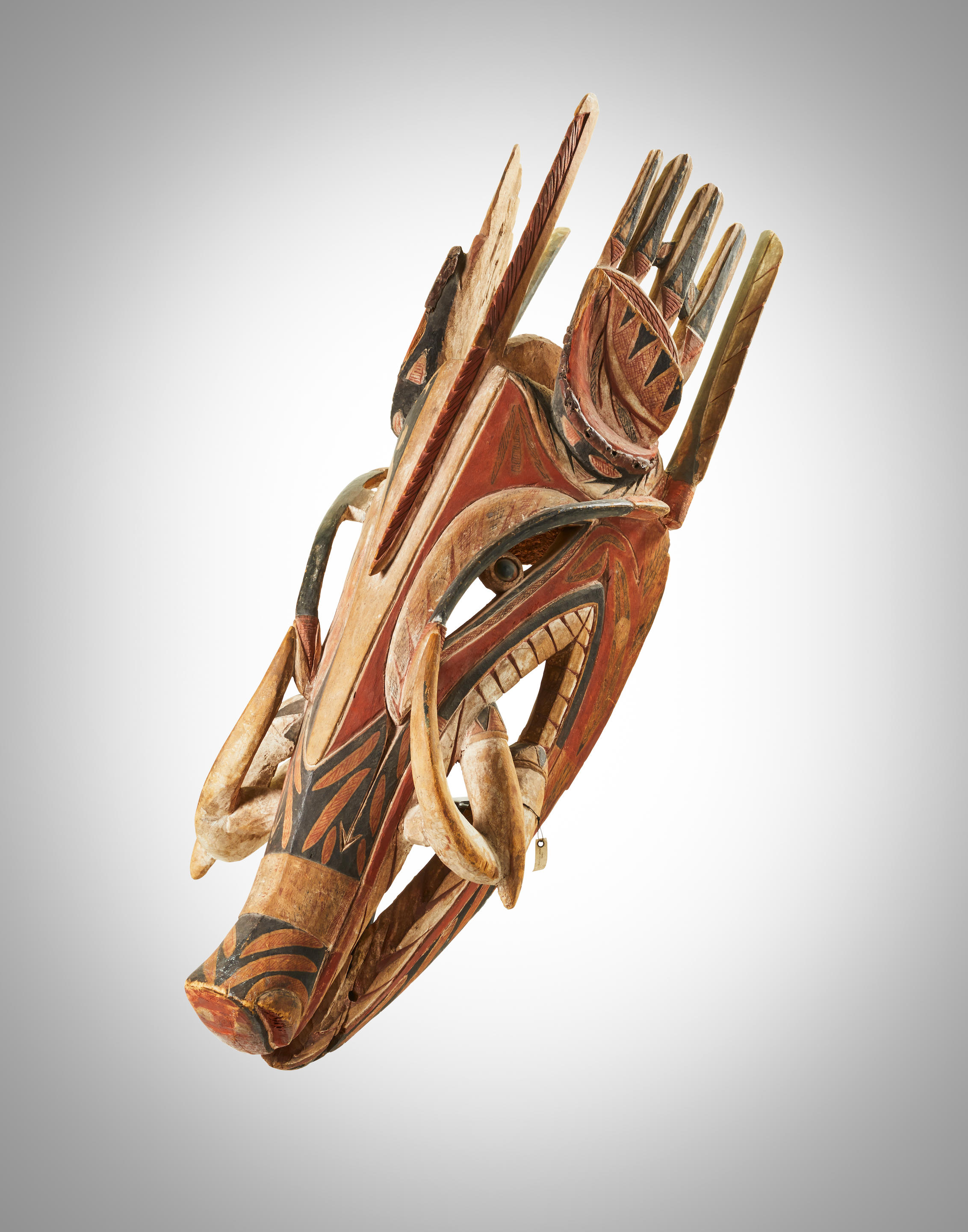
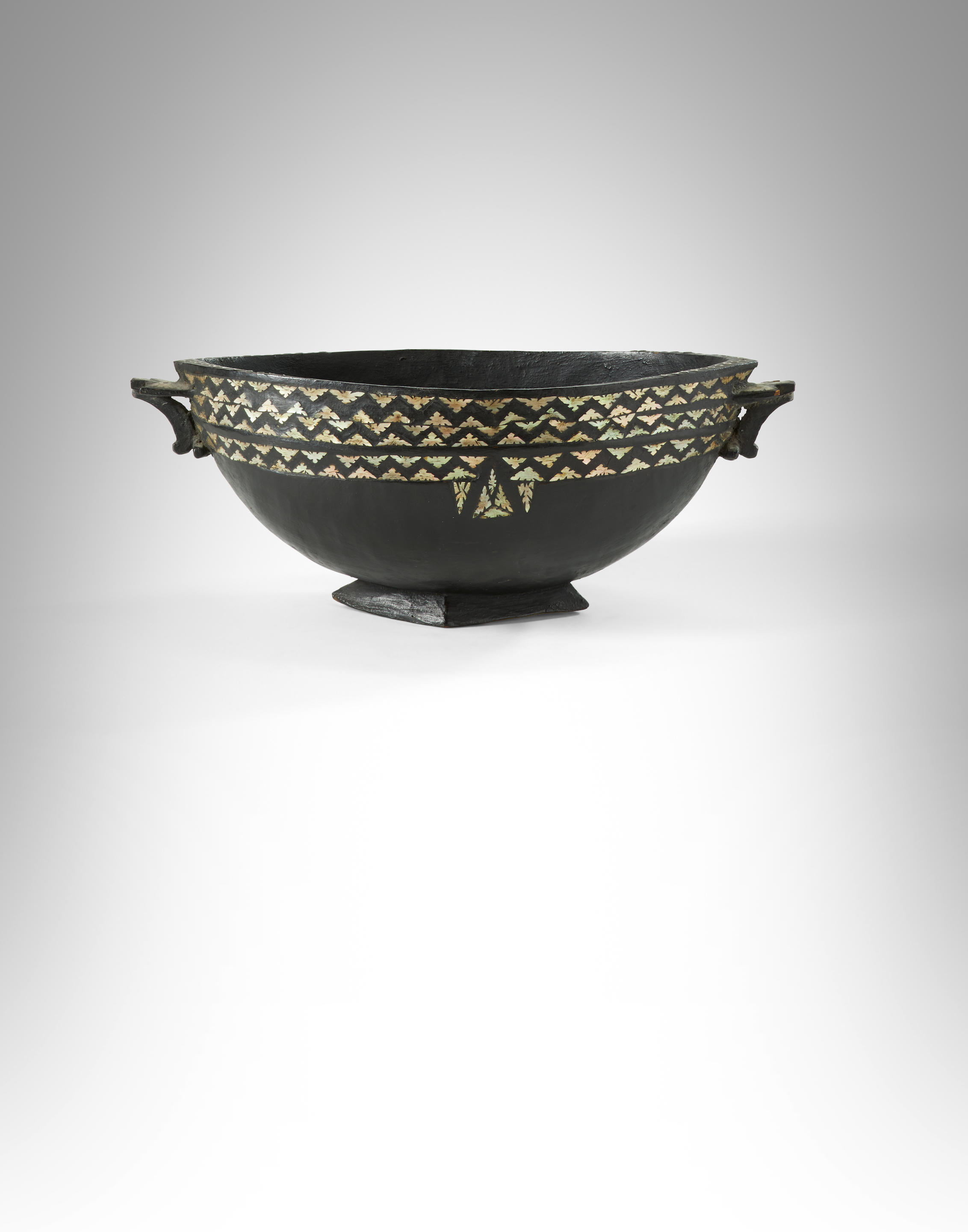
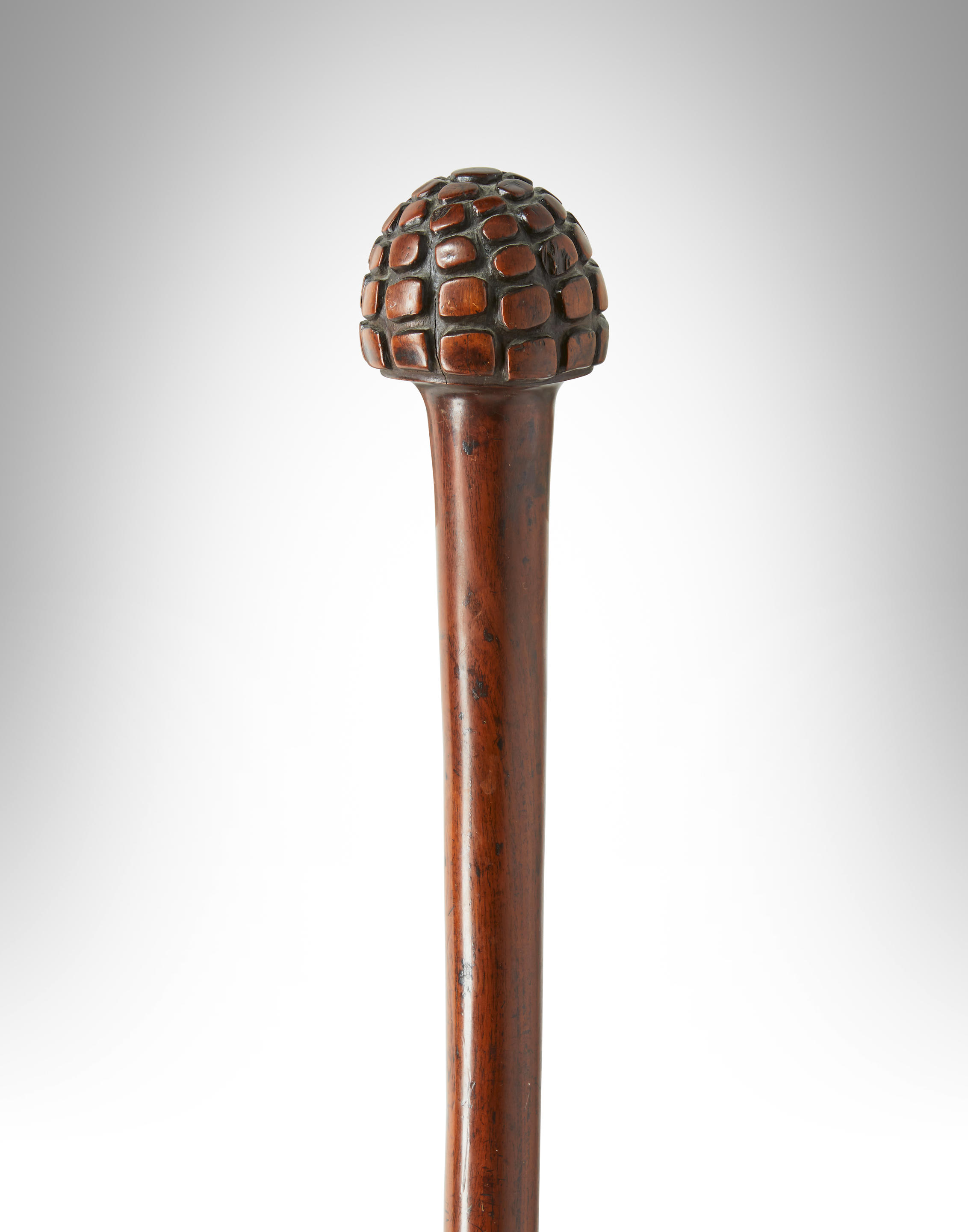
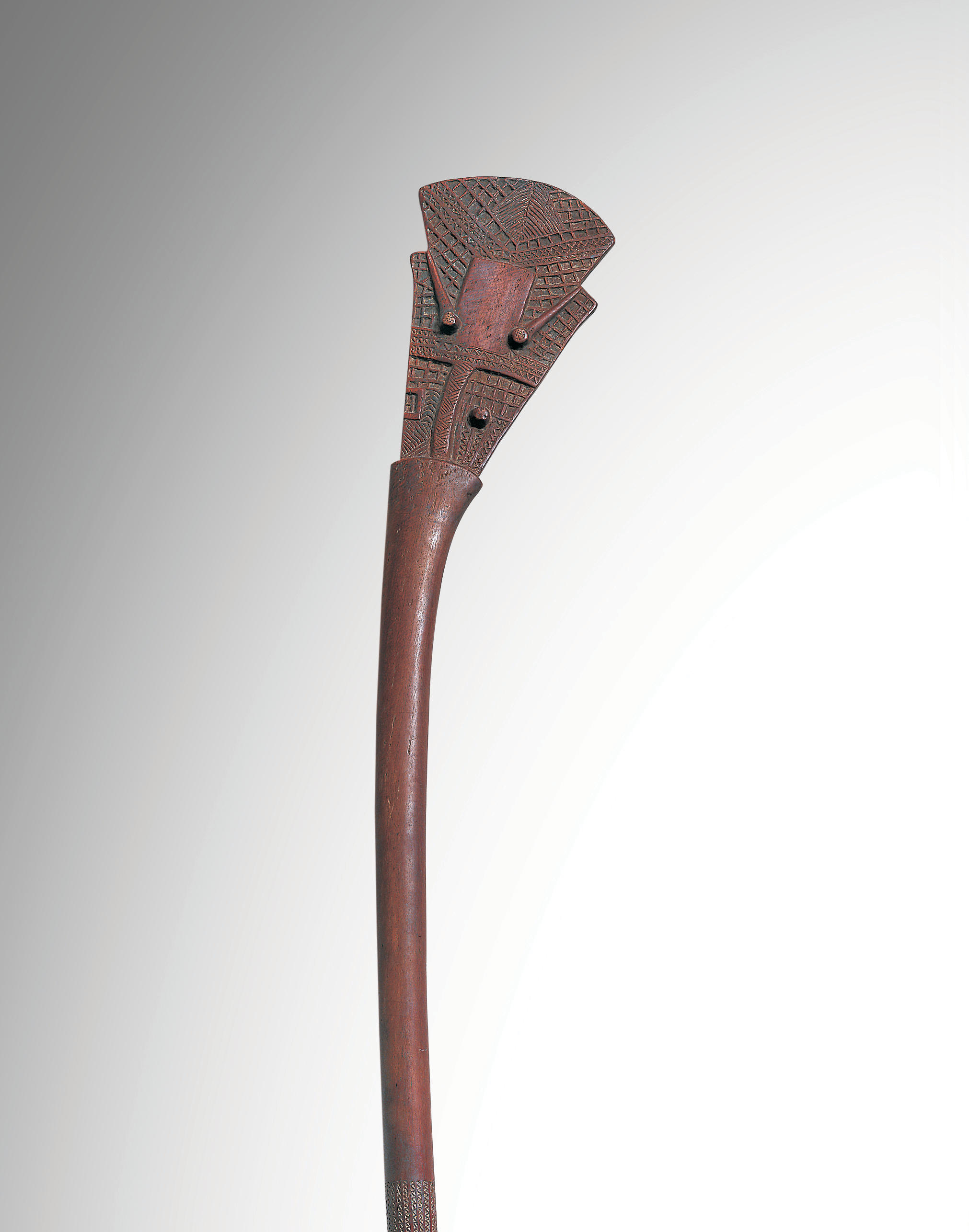
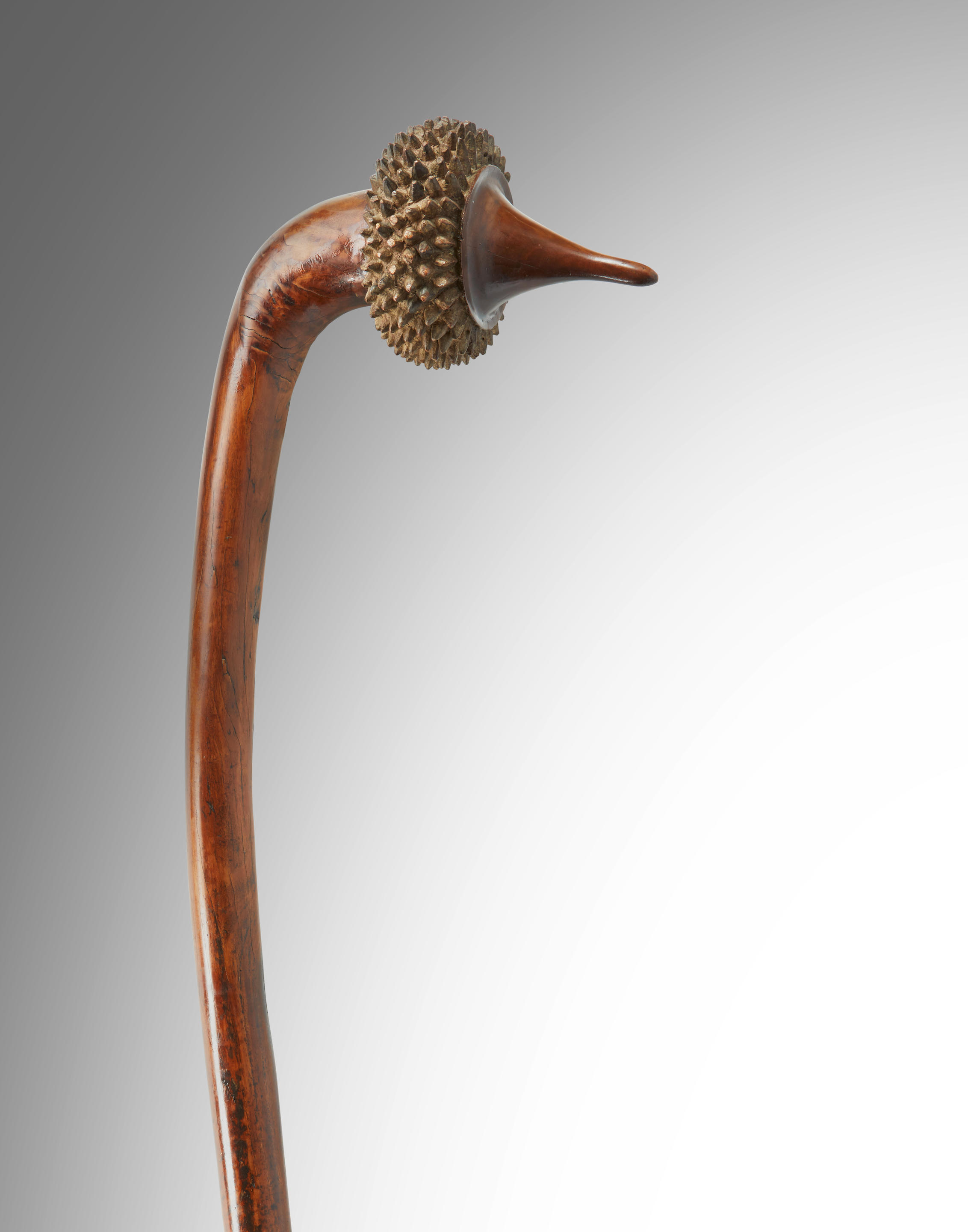
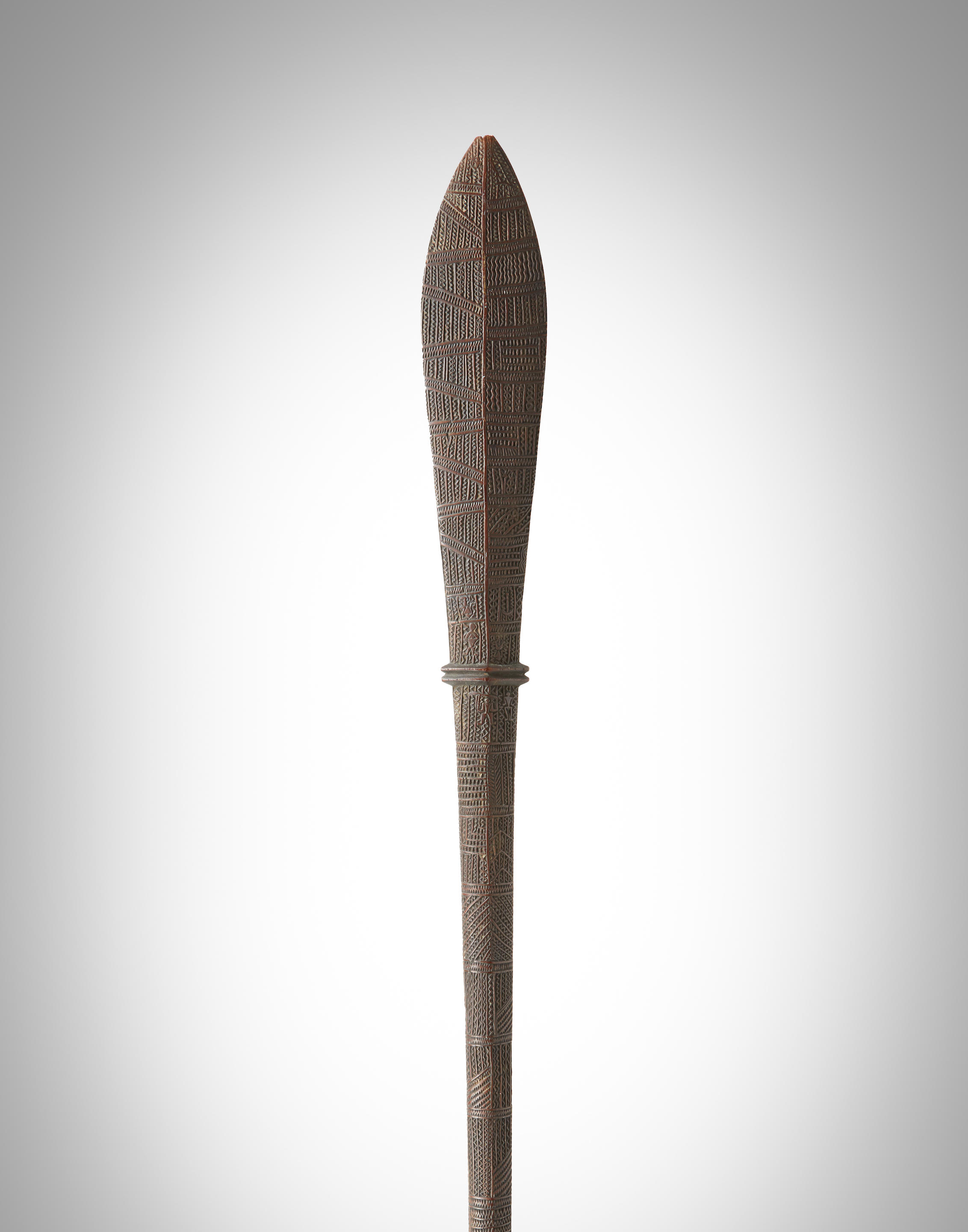
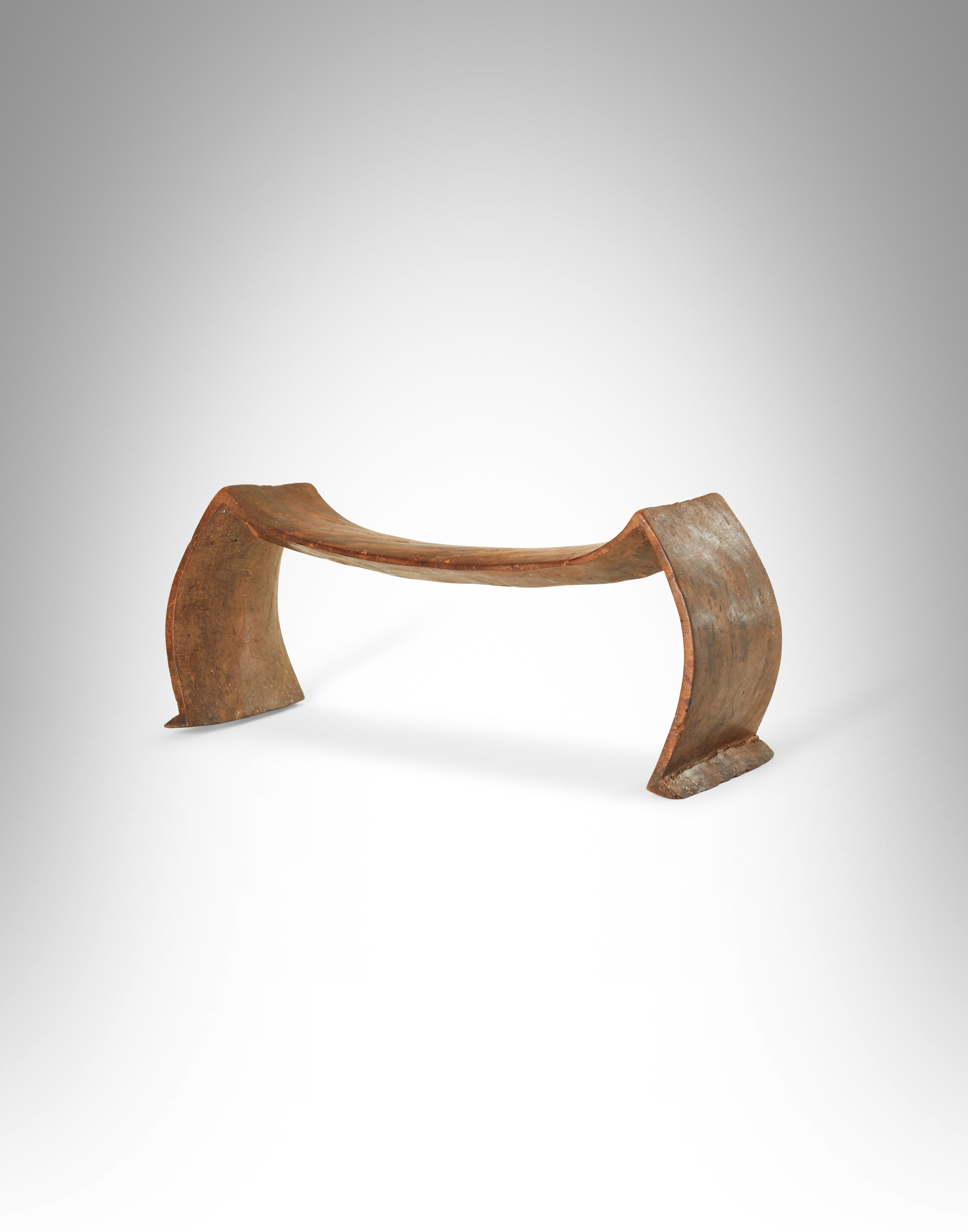
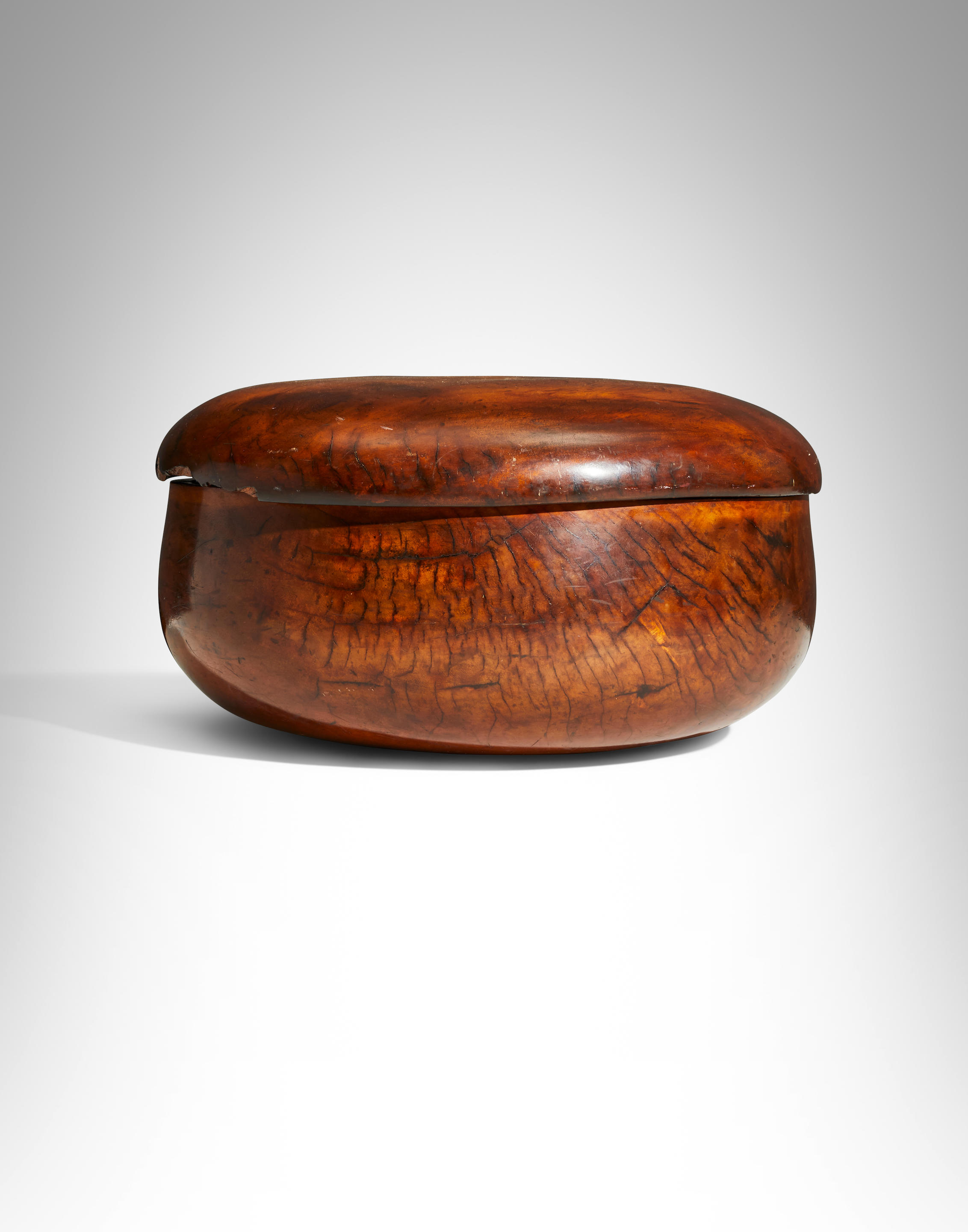
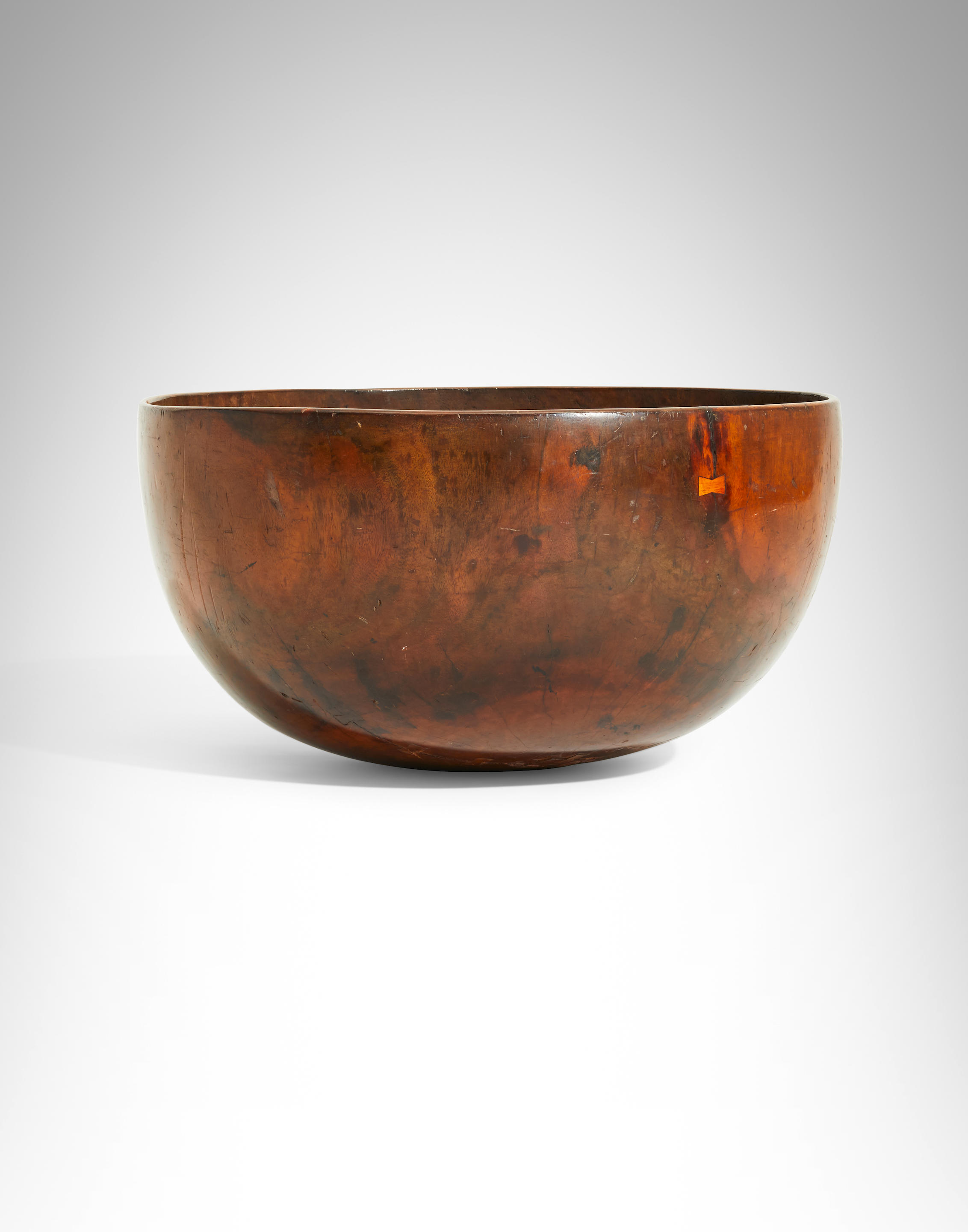
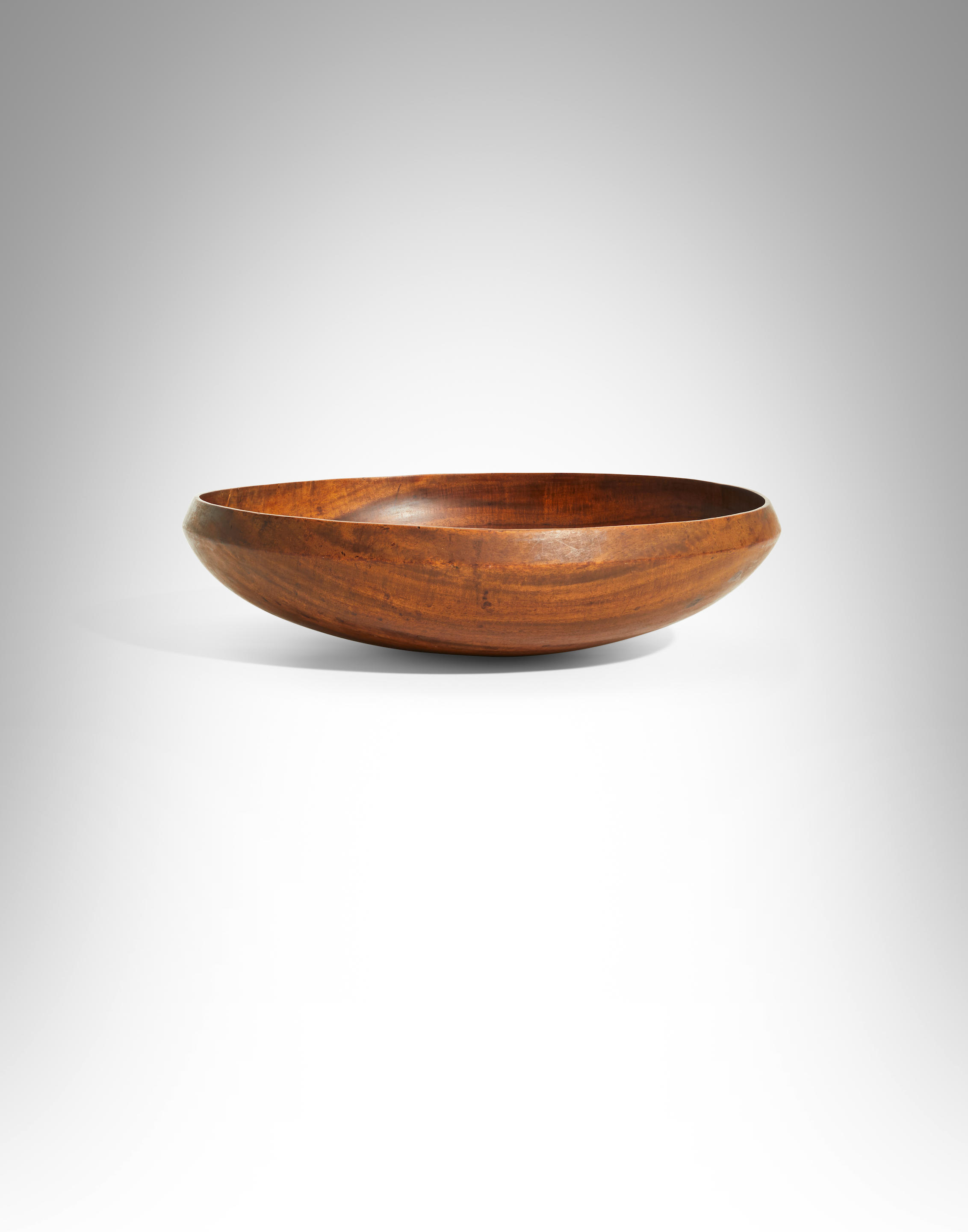
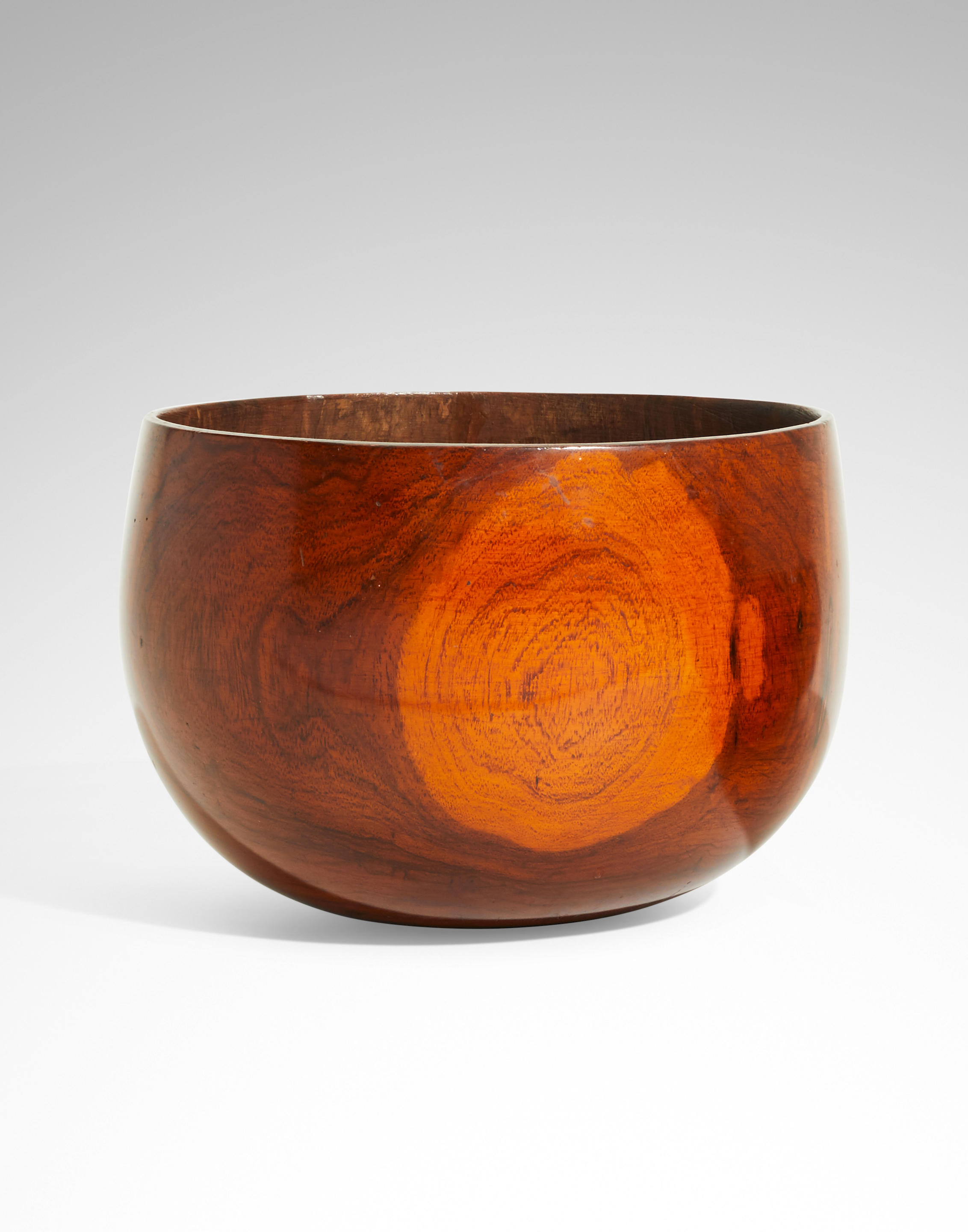
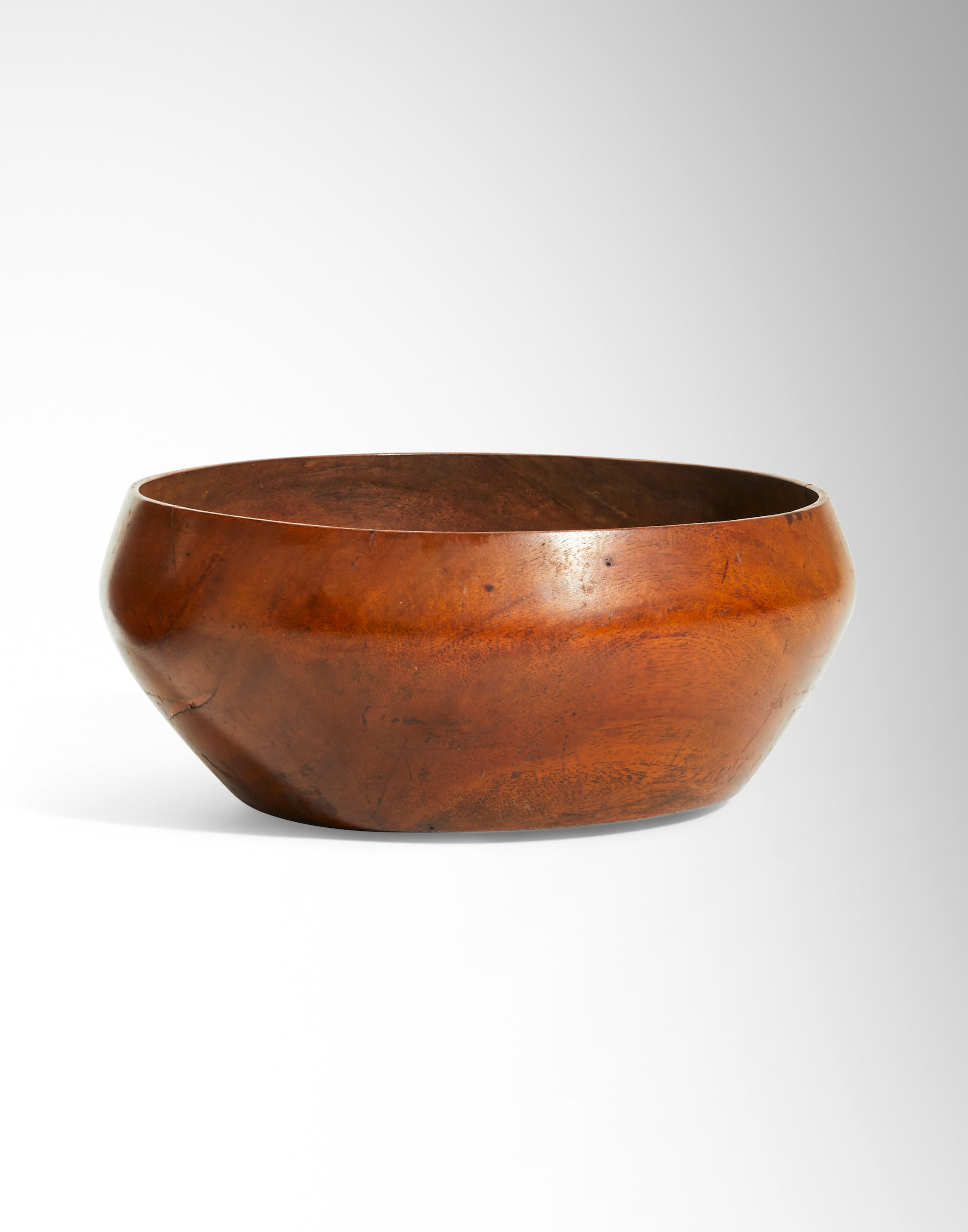

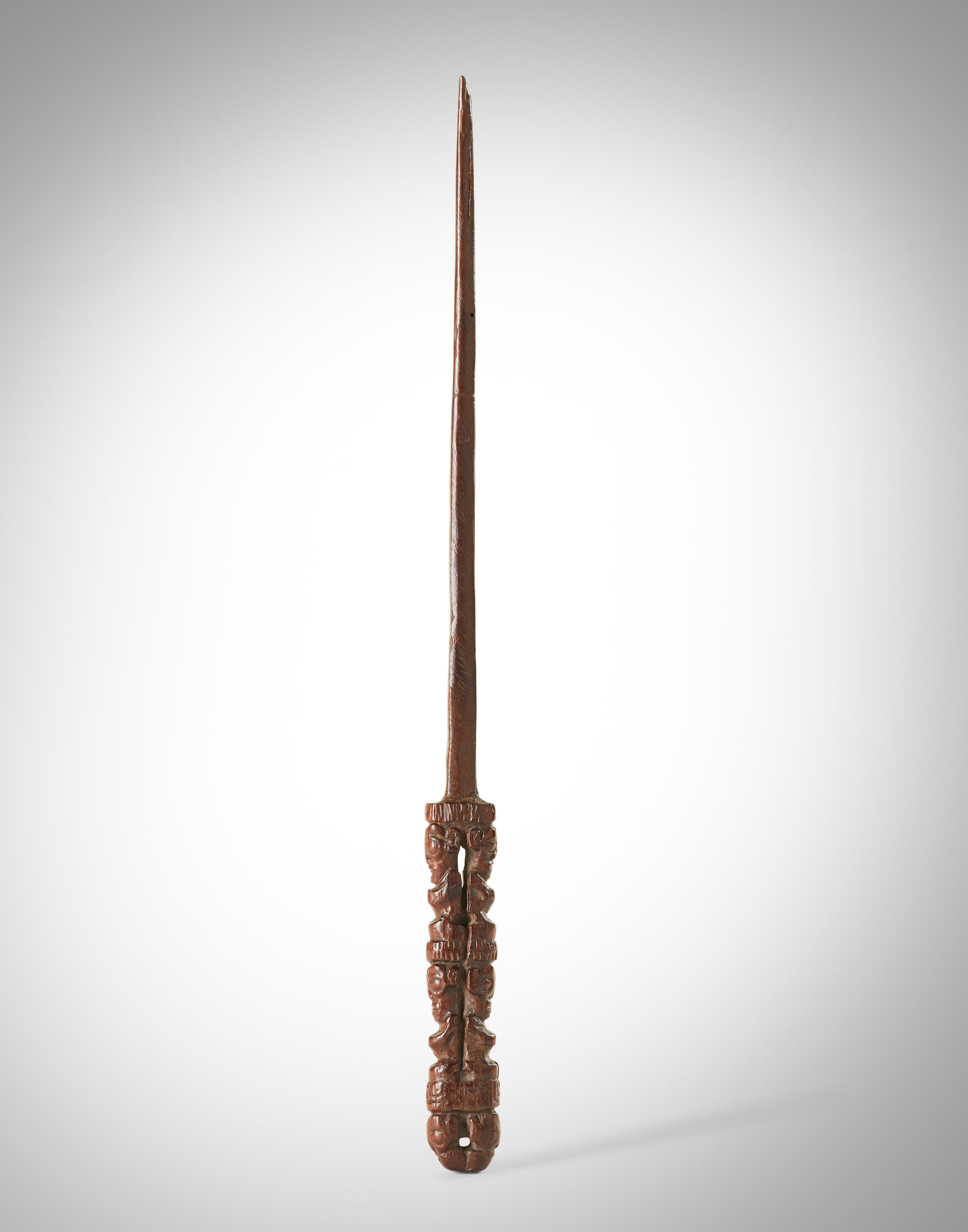
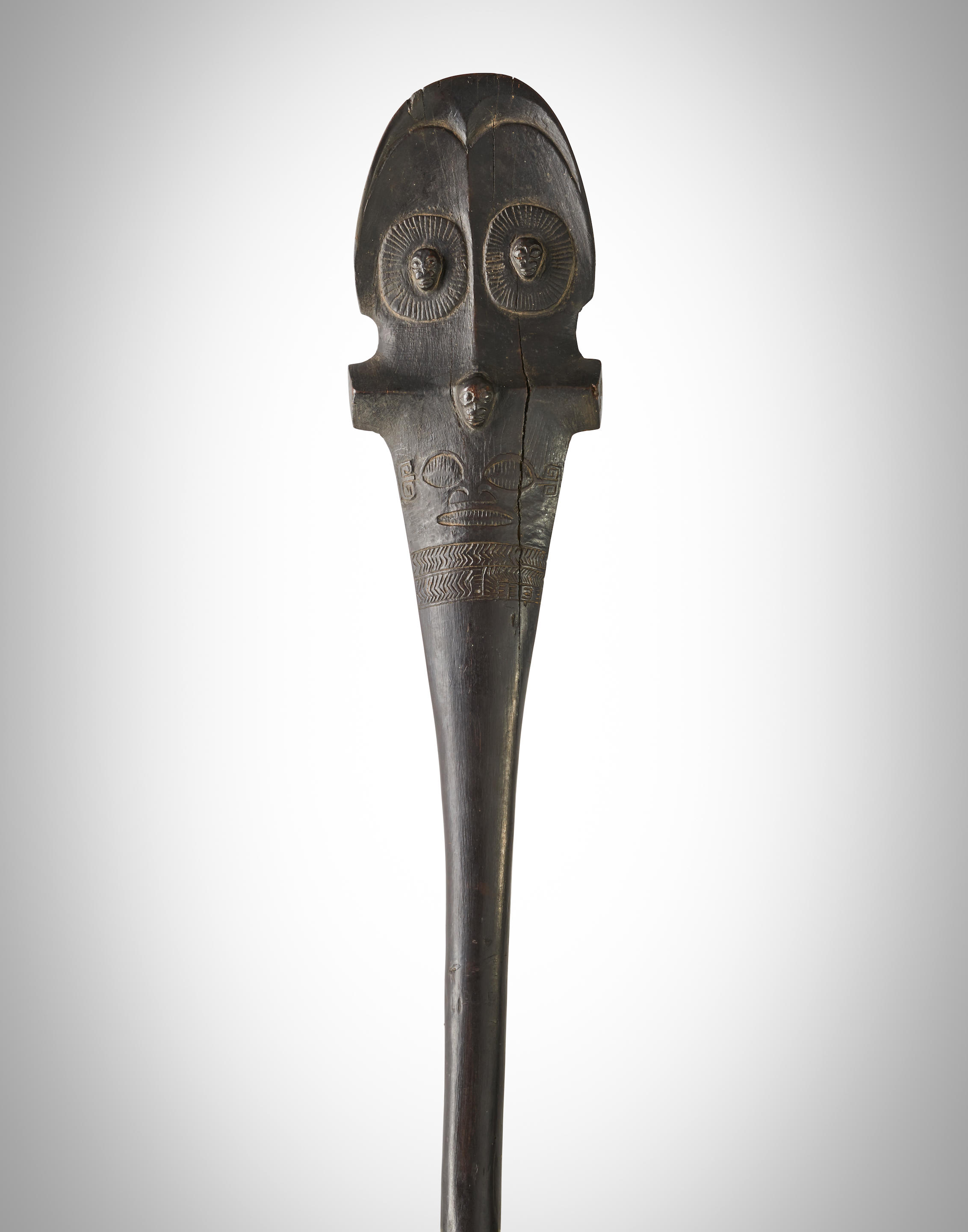
Try LotSearch and its premium features for 7 days - without any costs!
Be notified automatically about new items in upcoming auctions.
Create an alert